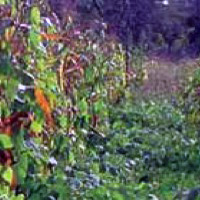Plant extracts - importance in sustainable agriculture

Accepted: 2 May 2021
PDF: 4643
All claims expressed in this article are solely those of the authors and do not necessarily represent those of their affiliated organizations, or those of the publisher, the editors and the reviewers. Any product that may be evaluated in this article or claim that may be made by its manufacturer is not guaranteed or endorsed by the publisher.
Plants due to the high content of various bioactive compounds are the main raw material for production of valuable, and useful bio-products (e.g., food, cosmetics, medicines, biostimulants, biopesticides, and feed). Different plant parts, for instance: seeds, fruits, flowers, stems, leaves, and roots can be used for their manufacture. Nowadays, there is a clear need to develop new, efficient, and environmentally safe methods of stimulation of plant, growth and crop protection. Plant-based extracts are new, natural, and multi-compounds products that could be used for these purposes. They possess antifungal, antimicrobial, antiparasitic, antiprotozoal, antioxidant, medicinal, aromatic, and anti-inflammatory properties. This group of natural products has the potential to become a new generation of bio-products suitable for use in sustainable agriculture. The purpose of this review is to provide an overview of the literature describing the impact of plant-derived extracts/biostimulants (PDBs) on crops grown in controlled, and real conditions as well as under various abiotic and biotic stresses; the extraction methods used to obtain PDBs, and the specific constituents responsible for their biostimulating activity. The application of these bio-products could be beneficial for sustainable production, due to several advantages, such as low toxicity to humans and the environment, enhanced resistance of cultivated plants to biotic and abiotic stress, increased yields and quality of crops, as well as the reduction in the use of mineral fertilisers and pesticides. However, deeper cooperation between industrial and academic research is required to accelerate the development of new environmentally safe solutions for future agriculture.
Highlights
- Higher plants constitute a rich source of various bioactive compounds for the production of useful natural products.
- The importance of the proper choice of extraction method and solvent to process and preserve the desired substances.
- Plant extracts as biostimulants and plant protection products for use in modern and sustainable agriculture.
- The positive effects of plant-based extracts on plants cultivated under normal and unfavourable conditions.
- Plant extracts as a new generation of eco-friendly products for the increment of the production of high-quality food.
How to Cite

This work is licensed under a Creative Commons Attribution-NonCommercial 4.0 International License.
PAGEPress has chosen to apply the Creative Commons Attribution NonCommercial 4.0 International License (CC BY-NC 4.0) to all manuscripts to be published.

 https://doi.org/10.4081/ija.2021.1851
https://doi.org/10.4081/ija.2021.1851



